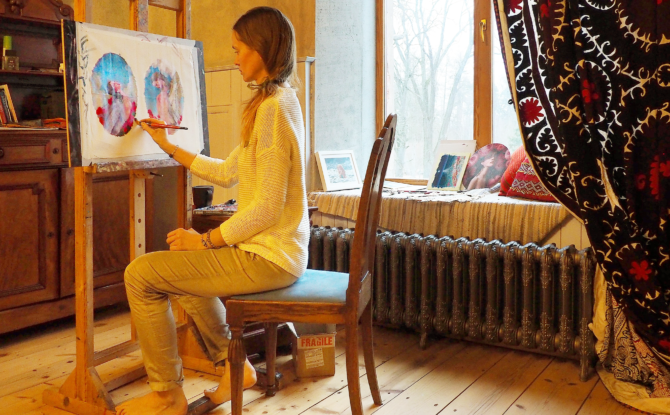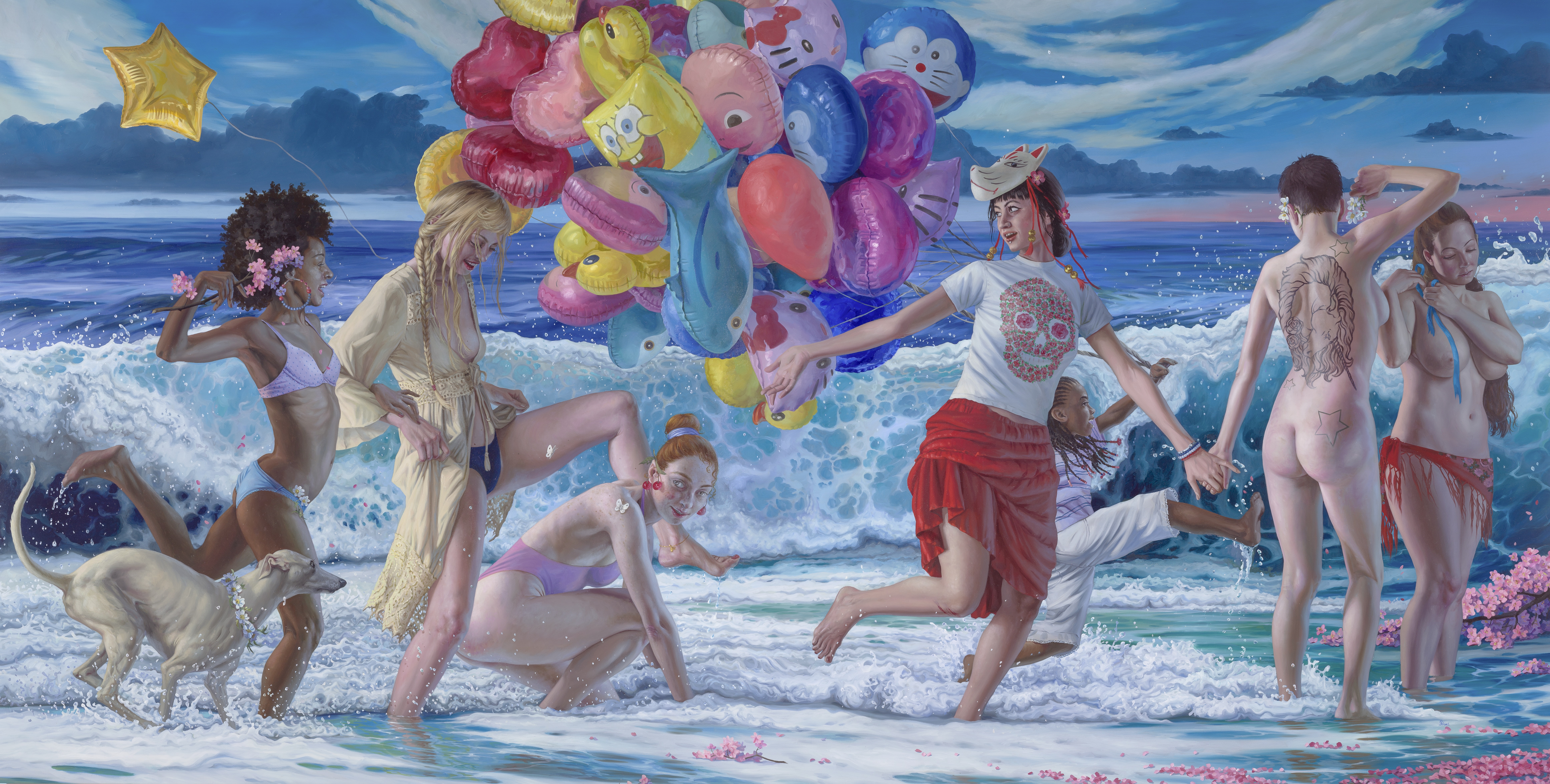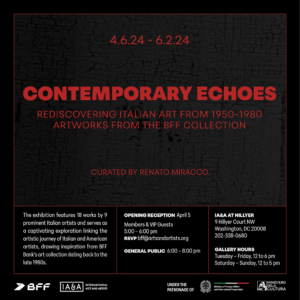
Sea of Change: Q&A with Jana Brike
Jana Brike was born in 1980 in Riga, Latvia and received her MA in painting from Art Academy of Latvia in 2005. Her artwork was first exhibited internationally in 1996, when she was still in her teens, and since then she has had 13 solo exhibitions and nearly 100 other projects and group exhibitions throughout the world. The overarching theme of Brike’s work is the internal space and state of the human soul: its dreams, longing, love, pain—the vast range of emotions offered by the human condition—along with the transcendence of them all, the growing up and self-discovery. Her work is her poetic visual autobiography. Brike currently lives and works in Riga, Latvia.
Sea of Change was on view at Hillyer on November 1 – December 15, 2019.

Your exhibition at Hillyer, Sea of Change, is part of a series of paintings exploring “the physical, emotional, and psychological milestones that commemorate the journey from girlhood to womanhood.” Tell us about the story behind these paintings, how long did they take you to create? Why did you make them? What are they about?
For me, these milestones are not really linear, since that notion would require to look at life as a journey from point A to B where the destinations are of significance and not the journey itself. I wouldn’t like to look at it like that. At every point you are at the very center of your universe, and at every point you are complete. It’s like a dance or a song – the point of it is not to be done with it, or to arrive at a certain note – because every single note absolutely matters the most at the moment it sounds. However, at the same time, we need certain symbols for the processes in our psyche that would make sense of the inner and outer transformation, to have a context for our being, to acknowledge certain archetypes of the feminine psyche for the reason to know our own soul. In a sense, self-observation itself brings about certain inner changes, you cannot truly SEE yourself and stay the same, self-observation is a means to awakening. This project has been exactly that to me and in some ways it has been in the making always since my early youth, as small sketches and thought writings. I was glad to have an opportunity to realize it in big scale at this time, and actual painting process took between 2 to 3 years.

This series was a commission and it took you several years to complete. Was it a relief to finish them or was it hard to say goodbye? Now that the series is complete, what are you working on now?
It feels like a little bit of both, I am excited to work on new work, but I also miss the scale and subject matter of the Sea of Change. I would love to continue the series, create several more panels. In my heart it’s a bit like a never-ending story because the symbols throughout our lives change, transform into each another, and merge endlessly. I don’t feel like I have said everything on the subject. However, at this time I am working on a new set of paintings and drawings that are a bit more surreal in nature and deal with our concept of endings and new beginnings, death and birth. Now, when I am at the final stages of my work, it has become oddly more relevant, since it certainly feels like our earth and society is entering the final stages of labor contractions of birthing some new form of being for us all. I hope with all my heart that it is a more harmonious, sensitive, kind, and feminine/motherly way of thinking than what we have known previously.
You have been creating work and exhibiting internationally since 1996. Can you tell us a little about the contemporary art scene in Latvia and what it is like to work internationally, and how this has influenced your work?
Latvia is a tiny North European country, not too wealthy and with a population of under 2 million people, so one cannot really talk about its art scene as something sequestered from the rest of the world. In that way it wouldn’t be able to exist at all. Latvia is a part of the European Union, so the art processes are interwoven with what’s happening in the rest of Europe. My very first exhibitions have been in Latvia, as well as in Germany, Finland, Italy, and the UK, with other continents following soon after. It was so early in my career that I can’t imagine exhibiting just locally. I think it would take away a lot of important multi-cultural context for my work.
You have amassed a large following on your Instagram. How do you use social media to connect with your audience and to other artists?
Honestly, I have never thought of building a following – it just organically happened. I simply shared what I was doing quite freely. I am happy I live in a time when sharing what we create and what we think doesn’t depend exclusively on one middle man, like an official art institution, and doesn’t have to be mediated by someone. It is so much easier to reach and connect to an audience, and the response I receive and see is immediate. It doesn’t depend on one individual or critic’s personal preferences, likes, and dislikes. It has also been a consequential means of connecting me to art galleries, other artists, collectors, and new dear friends.

